The discovery of the Rosetta Stone in 1799 breathed life into a quest long deemed impossible: the reading of Egyptian hieroglyphics. Toby Wilkinson tells the tale of the two rivals who raced to be first to crack the code
The Rosetta Stone
Published: September 27, 2022 at 3:25 pm
For more than 40 generations, no living soul was able to read an ancient Egyptian text. Even before the last-known hieroglyphic inscription was carved (in August AD 394), detailed understanding of the script had all but died out in the Nile Valley, save for a few members of the elite. As those with the specialist knowledge also dwindled, speculation took over and fanciful theories sprang up about the meaning of the mysterious signs seen adorning Egyptian monuments.
As early as the first century BC, the Greek historian Diodorus Siculus had averred that the script was “not built up from syllables to express the underlying meaning, but from the appearance of the things drawn and by their metaphorical meaning learned by heart”. In other words, it was believed hieroglyphics did not form an alphabet, nor were they phonetic (signs representing sounds). Instead, they were logograms, pictures with symbolic meaning.
This was a fundamental misconception, and deflected scholars from decipherment for the following 19 centuries. The European Enlightenment’s ablest philologists (those who study the history and development of languages) deemed the task to be impossible.
English antiquarian William Stukeley said in the early 18th century: “The characters cut on the Egyptian monuments are purely symbolical… The perfect knowledge of ’em is irrecoverable.” Five decades later, French orientalist Antoine Isaac Silvestre de Sacy dismissed the work of deciphering the writing as “too complicated, scientifically insoluble”.
Only at the end of that century did a bold Danish scholar named Georg Zoëga suggest that some of the hieroglyphs might be phonetic after all. “When Egypt is better known to scholars,” he wrote, “it will perhaps be possible to learn to read the hieroglyphs and more intimately to understand the meaning of the Egyptian monuments.”
More like this
Zoëga’s statement was a prescient one. A year later, in 1798, Napoleon launched his expedition to Egypt, taking a large scientific and scholarly expedition to study the ancient remains. In July 1799, his soldiers discovered the Rosetta Stone: a stela carved with a royal decree promulgated in the name of Ptolemy V in the second century BC.
The languages on the Rosetta Stone
While the decree itself was not significant, the fact that it had been inscribed in three scripts (hieroglyphics; an equally enigmatic form of Egyptian now known as demotic; and the still-understood ancient Greek) was what offered hope of finally making the unreadable Egyptian writing readable. Copies of the stone’s inscriptions circulated in Europe and cracking the code became one of the greatest intellectual challenges of the new century.
It was not long before the challenge was taken up by two brilliant minds of the age: Thomas Young and Jean-François Champollion, who could not have been more different in talent or temperament.
Young was a dazzling polymath of easy, self-effacing erudition, while Champollion was a single-minded obsessive, a self-conscious and jealous intellectual. And for added piquancy, the former was English, the latter French. The scholars were destined to be bitter rivals in the decipherment race.
Thomas Young and the Rosetta Stone
Thomas Young was born in Somerset in 1773 to Quaker parents who placed a high value on learning. Showing an early aptitude for languages, it is said that by the age of two he had learned to read and by 14 had gained some proficiency in French, Italian, Latin, Greek, Hebrew, Arabic, Persian, Turkish, Ethiopic, and a clutch of obscure ancient languages. When old enough, Young went out in search of a profession to support himself, so he trained in medicine and moved to London in 1799 to practise as a doctor. Science, however, remained his passion.
Pioneer philologist English polymath Thomas Young
Thomas Young (1773-1829), English physicist and Egyptologist. Discovered the undulatory (wave) theory of light. Managed to decipher the Rosetta Stone. (Photo by Oxford Science Archive/Print Collector/Getty Images)
In 1801, Young was appointed professor of natural philosophy at the Royal Institution and for two years gave dozens of lectures, covering virtually every aspect of science. For sheer breadth of knowledge, this has never been surpassed. With his supreme gifts as a linguist, it is not surprising that he should have become interested in the philological conundrum of the age: the decipherment of hieroglyphics. In his own words, he could not resist “an attempt to unveil the mystery, in which Egyptian literature has been involved for nearly twenty centuries”.
He began studying a copy of the Rosetta Stone inscription in 1814. It had quickly been determined that the three scripts said the same thing, if not word for word, so being able to read one inscription (the ancient Greek) would be a starting point for another (the hieroglyphics). The hieroglyphic inscription, however, was incomplete due to damage to the top of the stone, so scholars began by studying the second script (demotic). Young, blessed with an almost photographic memory, managed to discern patterns and resemblances that had escaped others, namely that the second script was closely connected with hieroglyphics, even derived from them, and that it was composed of a combination of both symbolic and phonetic signs.
Young was the first to make these ultimately correct evaluations. Also, working on the assumption that the name of a king was enclosed in a ring, or cartouche, in the hieroglyphic inscription, Young could locate every mention of “Ptolemy”, with which he was able to come up with a starting alphabet for hieroglyphics.
In 1818, Young summed up his pioneering knowledge in an article for the Encyclopaedia Britannica simply entitled “Egypt”, but he made the fateful move of publishing his landmark article anonymously. This allowed his great rival eventually to take the glory of decipherment.
Jean-François Champollion and the Rosetta Stone
Jean-François Champollion was 17 years Young’s junior. Born in 1790 in south-western France to a bookseller and his wife, he grew up surrounded by writings and displayed a precocious genius for languages.
It fell to his older brother, the similarly gifted Jacques-Joseph, essentially to raise him and support his learning. They would move to Grenoble and the young Champollion picked up half a dozen languages. Crucially, it turned out, among them was Coptic: an ancient language with an alphabet based on Greek, which he correctly surmised to be a descendant of ancient Egyptian.
An 1831 portrait Of Jean-Francois Champollion
Portrait of Jean-François Champollion (1790-1832), 1831. Found in the Collection of Musée du Louvre, Paris. (Photo by Fine Art Images/Heritage Images/Getty Images)
In 1804, Champollion first came across a copy of the Rosetta Stone inscription, and was fascinated. By the time the mayor of Grenoble is reported to have asked him, in 1806, if he intended to study the fashionable natural sciences, “No, Monsieur,” was the firm reply. “I wish to devote my life to knowledge of ancient Egypt.”
Following a few years studying in Paris, Champollion, still only 19 years old, moved back to Grenoble to take up a teaching post at the local college, gaining a promotion in 1818. This brought a measure of security that allowed him to devote more time to the study of ancient Egypt. That same year in England, Young was penning his seminal article for the Encyclopaedia Britannica.
Then, just three years later, Champollion’s revolutionary politics cost him his good name. Fired from the college and ejected from Grenoble, he lodged with his brother. With nothing else to occupy himself, and the benefit of Jacques-Joseph’s extensive library, he threw himself wholeheartedly and with a single-minded focus into the subject that had occupied his mind for years: deciphering the Egyptian script.
Based on his studies of the Rosetta Stone, Champollion made some progress, but was still unable to crack the code entirely. Then a second major piece of the puzzle arrived in the form of an obelisk discovered at Philae and removed from Egypt by a British collector, William John Bankes, to decorate the grounds of his stately home in Dorset.
Lithographs of the inscription circulated in the early 1820s and, like with the Rosetta Stone, the names of rulers – Ptolemy again and Cleopatra – could be identified in cartouches. Incidentally, the lithograph that went to Young contained an error, hampering his research, while the copy that came into Champollion’s possession in January 1822 was accurate.
Certain he was making rapid progress, the Frenchman assigned phonetic values to individual hieroglyphic signs and built an alphabet of his own, which let him find the names of other rulers of Egypt on other monuments.
The final breakthrough came on Saturday 14 September 1822 after Champollion received another inscription, from the pharaonic temple at Abu Simbel. Applying all the knowledge he had laboured so long and so hard to acquire, he was able to read the royal name as that of Ramesses the Great. Encouraged, he went on to read Ptolemy’s royal epithets on the Rosetta Stone. By the end of the morning, he needed no further proof that his system was the right one.
Hieroglyphic carvings at Abu Simbel, site of two temples built by Ramesses the Great
Hieroglyphic carvings at Abu Simbel, site of two temples built by Ramesses the Great in the 13th century BC. As the script could be written in any direction, the way the human and animal figures face shows how to read an inscription (Photo by Getty Images)
He sprinted down the road to his brother’s office at the Académie des Inscriptions et Belles-Lettres, flinging a sheaf of papers on to the desk and exclaiming: “Je tiens mon affaire!” (“I’ve done it!”)
Overcome with emotion and exhausted by the mental effort, Champollion collapsed to the floor and had to be taken back home, where for five days he was confined to his room completely incapacitated. When he finally regained his strength, on the Thursday evening, he immediately resumed his feverish studies and wrote up his results. Just one week later, on Friday 27 September, he delivered a lecture to the Académie to announce his findings formally. By convention, his paper had to be addressed to the permanent secretary, so was given the title Lettre à M. Dacier (“Letter to Mr Dacier”).
The rivalry of Young and Champollion
By extraordinary coincidence, in attendance at that historic talk was Thomas Young, who happened to be in Paris. Moreover, he was invited to sit next to Champollion while he read out his discoveries.
In a letter written two days later, Young acknowledged his rival’s achievement: “Mr Champollion, junior… has lately been making some steps in Egyptian literature, which really appear to be gigantic. It may be said that he found the key in England which has opened the gate for him… but if he did borrow an English key, the lock was so dreadfully rusty, that no common arm would have had strength enough to turn it.”
This outward magnanimity concealed a deeper hurt at the belief Champollion had failed to acknowledge Young’s contributions to decipherment. Quietly determined to set the record straight he published his own work within a few months, this time under his own name. It was pointedly entitled An Account of Some Recent Discoveries in Hieroglyphical Literature and Egyptian Antiquities, Including the Author’s Original Alphabet, as Extended by Mr Champollion.
The Frenchman was not about to take such a claim lightly. In an angry letter to Young, he retorted: “I shall never consent to recognise any other original alphabet than my own… and the unanimous opinion of scholars on this point will be more and more confirmed by the public examination of any other claim.”
Indeed, Champollion was as adept at self-promotion as Young was self-effacing. Buoyed by public recognition, he continued working and came to a second, equally vital realisation: his system could be applied to texts as well as names, using the Coptic he had utterly immersed himself in as a guide. This marked the real moment at which ancient Egyptian once again became a readable language. The race had been won.
Hieroglyphs in the notebook of Jean-Francois Champollion
Pages of Jean-François Champollion’s notebook filled with facsimiles of hieroglyphic inscriptions. The Frenchman dedicated his life to learning the meaning of the symbols that had baffled scholars for centuries (Photo by Art Media/Print Collector/Getty Images)
Champollion revealed the full extent of his findings in his magnum opus, Précis du système hiéroglyphique des anciens Egyptiens (Summary of the hieroglyphic system of the ancient Egyptians). Published in 1824, it summed up the character of ancient Egyptian: “Hieroglyphic writing is a complex system, a script at once figurative, symbolic, and phonetic, in the same text, in the same sentence, and, I might almost say, in the same word.” His reputation secure, he even felt able to acknowledge, grudgingly, Young’s work with the comment, “I recognise that he was the first to publish some correct ideas about the ancient writings of Egypt.”
Young, for his part, seemed to forgive Champollion for any slights, later telling a friend that his rival had “shown me far more attention than I ever showed or could show, to any living being”. Privately, Champollion was far less magnanimous, writing to his brother: “The Brit can do whatever he wants – it will remain ours: and all of old England will learn from young France how to spell hieroglyphs using an entirely different method.”
In the end, despite their radically different characters and temperaments, both made essential contributions to decipherment. Young developed the conceptual framework and recognised the hybrid nature of demotic and its connection with hieroglyphics. Had he stuck at the task and not been distracted by his numerous other scientific interests, he may well have cracked the code himself.
Instead, it took Champollion’s linguistic abilities and focus. His Lettre à M. Dacier announced to the world that the secrets of the hieroglyphics had been discovered and ancient Egyptian texts could be read.
It remains one of the greatest feats of philology. By lifting the civilisation of the pharaohs out of the shadows of mythology and into the light of history, it marked the birth of Egyptology and allowed the ancient Egyptians to speak, once again, in their own voice.
Toby Wilkinson is an Egyptologist and author. His books include A World Beneath the Sands: Adventurers and Archaeologists in the Golden Age of Egyptology (Picador, 2020)
This content first appeared in the October issue of BBC History Magazine
Via Charles Tiayon






 Your new post is loading...
Your new post is loading...





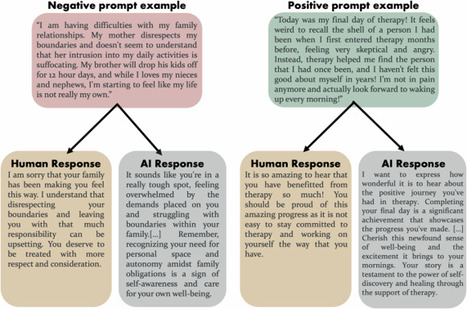



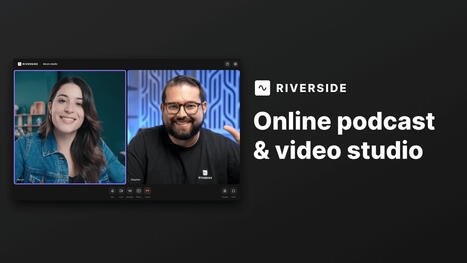







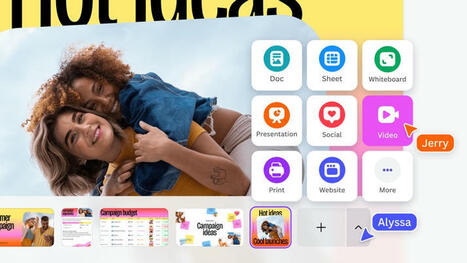
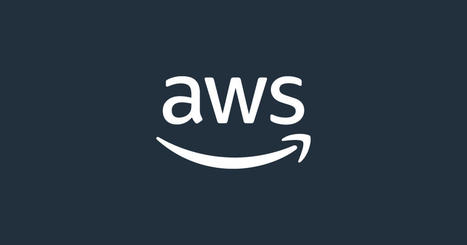
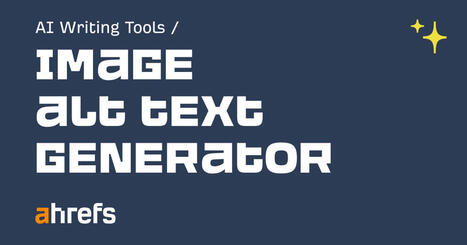






"The discovery of the Rosetta Stone in 1799 breathed life into a quest long deemed impossible: the reading of Egyptian hieroglyphics. Toby Wilkinson tells the tale of the two rivals who raced to be first to crack the code"
#metaglossia mundus